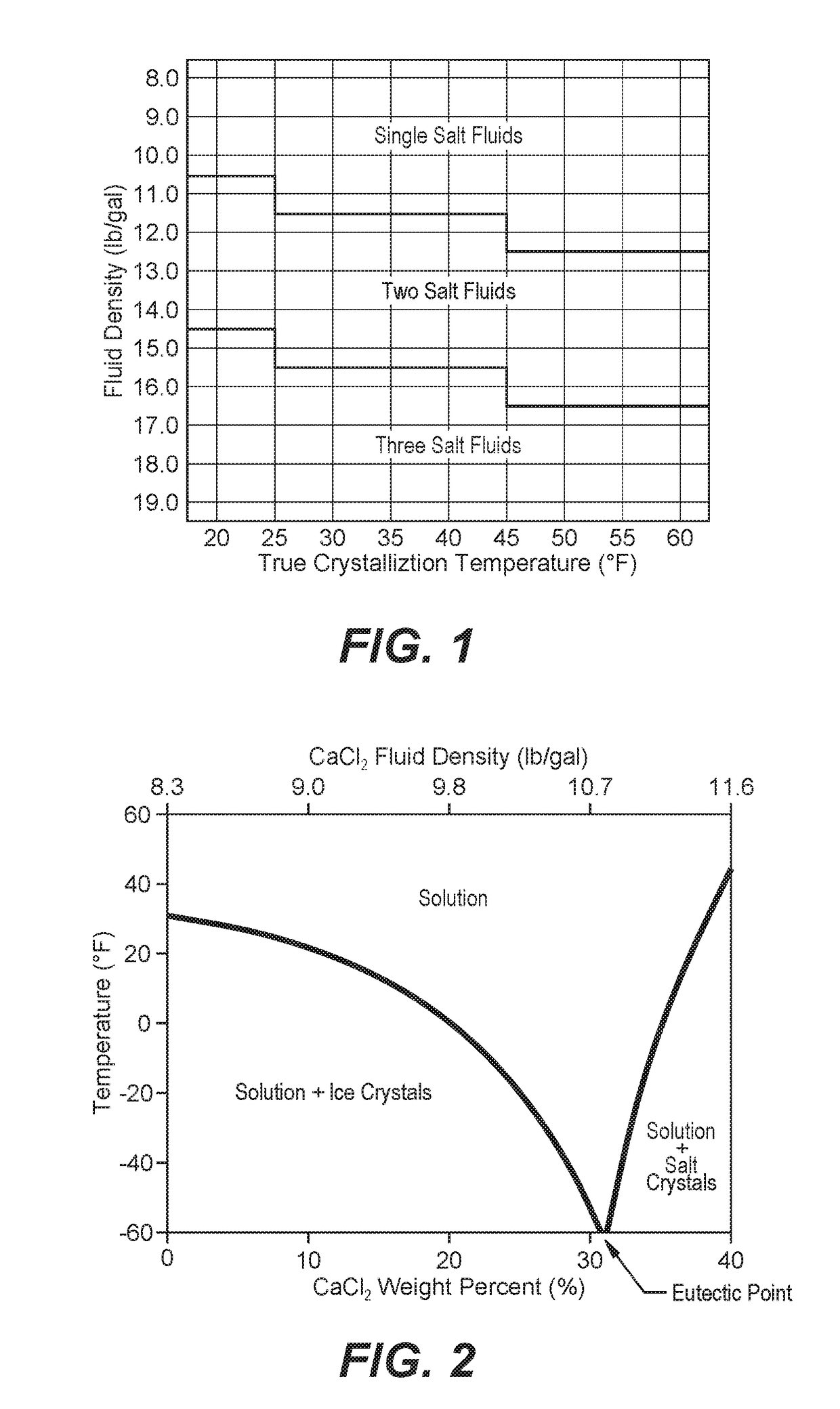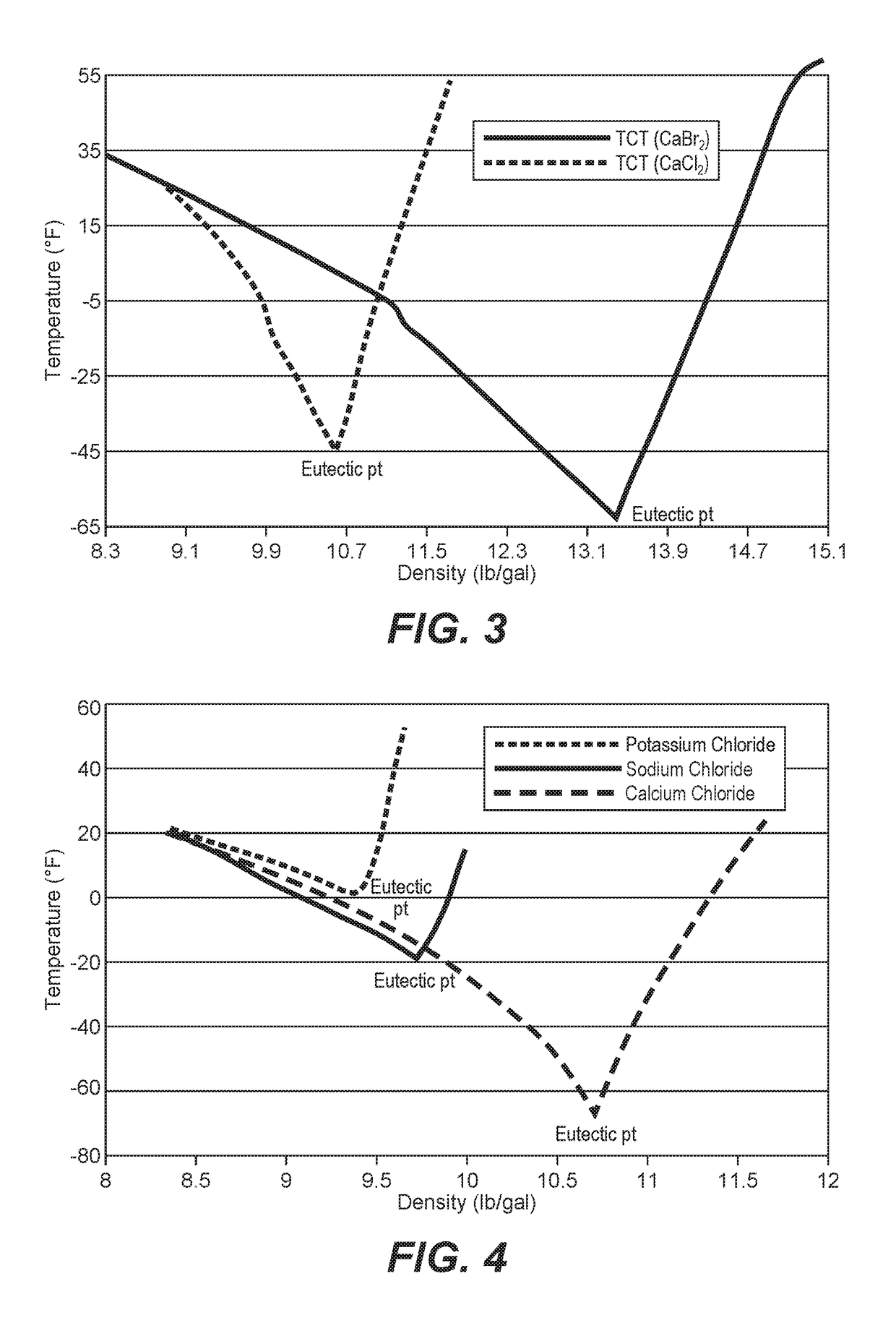Method of Increasing the Density of a Well Treatment Brine
- Summary
- Abstract
- Description
- Claims
- Application Information
AI Technical Summary
Benefits of technology
Problems solved by technology
Method used
Image
Examples
example 1
[0050]This Example illustrates a method of increasing the density of a 14.2 ppg calcium bromide solution to 16.5 ppg using dry calcium bromide salt. Glycerol is first introduced to the 14.2 ppg calcium bromide brine to reduce the density of the brine to 13.0 ppg. The solution is stirred for five minutes and then filtered. Then incrementally, dry calcium bromide is added to the brine of 13.0 ppg to render a brine having a density of 16.5 ppg. The calcium bromide solution is preferably filtered every 100 grams to remove any contaminates created from the dry calcium bromide salt. To make 350 ml of brine having a density of 16.5 ppg, the amount of 14. 2 ppg CaBr2 was 147.3 ml, the amount of glycerol was 130.4 ml and the amount of dry calcium bromide was 247.6 g.
PUM
 Login to View More
Login to View More Abstract
Description
Claims
Application Information
 Login to View More
Login to View More - R&D
- Intellectual Property
- Life Sciences
- Materials
- Tech Scout
- Unparalleled Data Quality
- Higher Quality Content
- 60% Fewer Hallucinations
Browse by: Latest US Patents, China's latest patents, Technical Efficacy Thesaurus, Application Domain, Technology Topic, Popular Technical Reports.
© 2025 PatSnap. All rights reserved.Legal|Privacy policy|Modern Slavery Act Transparency Statement|Sitemap|About US| Contact US: help@patsnap.com


